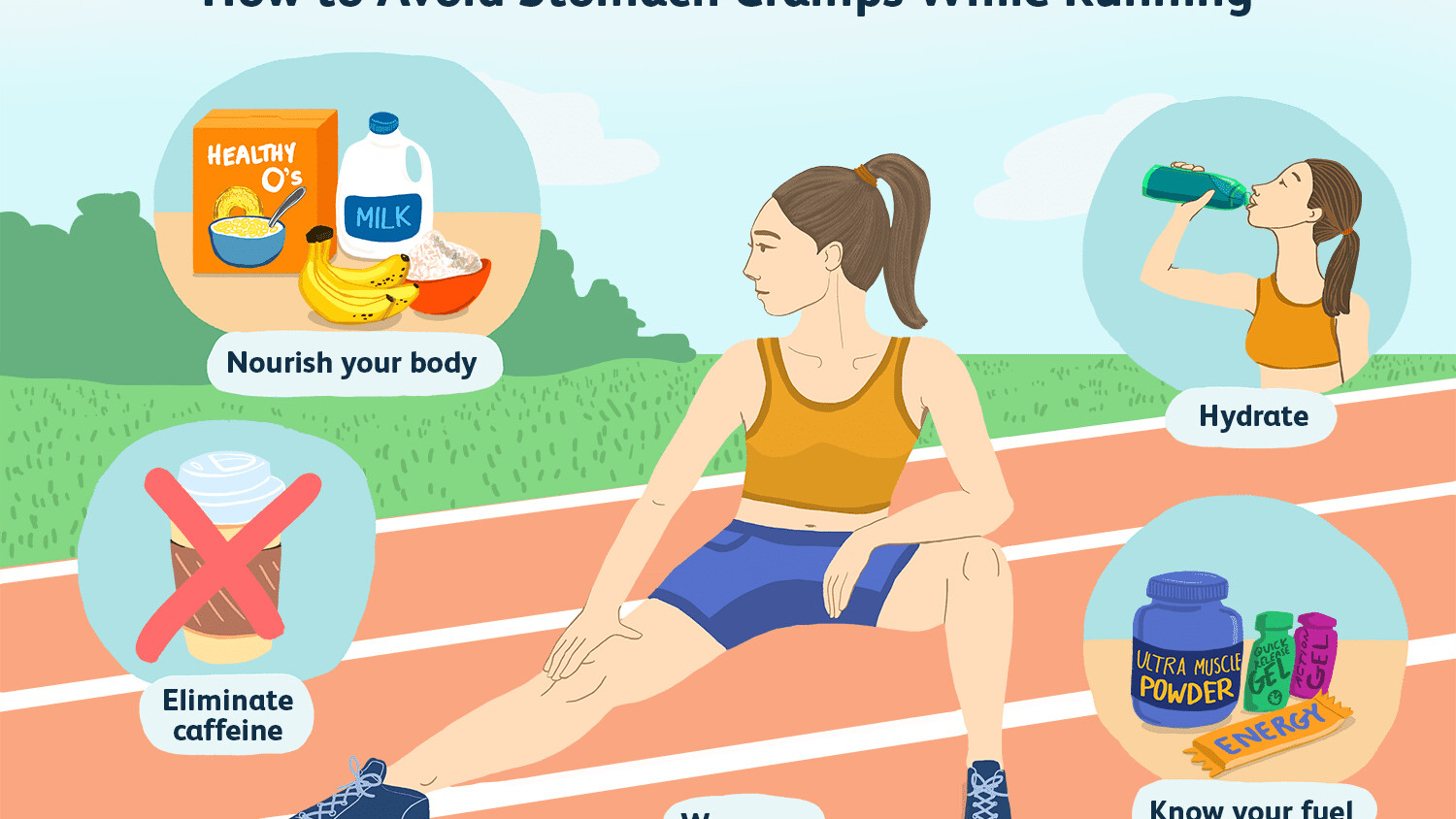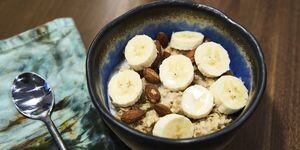Running News Daily
Running News Daily is edited by Bob Anderson. Send your news items to bob@mybestruns.com Advertising opportunities available. Train the Kenyan Way at KATA Kenya and Portugal owned and operated by Bob Anderson. Be sure to catch our movie A Long Run the movie KATA Running Camps and KATA Potato Farms - 31 now open in Kenya! https://kata.ke/
Index to Daily Posts · Sign Up For Updates · Run The World Feed
What It Means to Overfuel on the Run and How to Avoid It
It’s possible to take in too many carbs, especially if you have a late start, it’s super hot, or you feel like you need more energy.
Whether you’re training to cross your first finish line, building on your training experience in order to PR, or fine-tuning race practices to win, every runner out there strives for continuously improved performance. The definition of “prime performance,” and what you need to get there may vary. But one thing that’s not up for debate: the need for optimal fuel to get from start to finish.


So what happens when this keystone of performance moves beyond optimal and into excess? What are the signs of too much fuel being added to the tank? While you’ve likely heard of the dangers of underfueling, it’s time to explore the other side of the equation—a.k.a. the surprisingly common misstep known as overfueling.
What does it mean to overfuel?
When it comes to fueling, there are typically three types of practices. Underfueling results in hitting wall after wall along the race course, causing you to miss a PR. Usually, a bit of knowledge coupled with some practice, and it’s pretty straightforward to move from underfueled to optimal.
The next approach is a bit of a unicorn: perfectly fueled, without distress or concern, mile after mile. Sometimes this happens by accident, but more than likely, steady energy is a result of research, as well as trial and error. The optimally fueled runner crosses the finish line with ego intact and wearing a smile (fingers crossed this look applies to you!).
Then, there are the runners who take gels, sports drinks, chews, and bars to the next level. This includes those who would rather let fuel runneth over before they’d let the tank get anywhere close to empty.
Overfueling is essentially more fuel than the gut can handle, and it takes many forms. It might look like you’re nailing down nutrition during training but come race day, your need to quiet the hunger that arises between prerace breakfast and a race that starts late forces you to eat more than planned. This additional energy and volume from multiple, larger servings of the meals and snacks that once worked on your before-dawn training runs won’t sit well on race day.
Here’s the thing, it’s pretty easy to move from optimal fueling to a member of the overfueling club (and vice versa if you have a change in your training schedule or race start or distance).
When it comes to under-, over-, and optimal fueling, the research is quite clear. Optimal fueling results from an intake of 30 to 60 grams of carbohydrate per hour of training or racing, ultimately providing steady energy from sources that agree with your gut. Because there’s a limit to the rate of absorption of a single type of fuel, additional carbohydrates from multiple sources such as glucose and fructose and therefore, reaching 90 to 100 grams of carbs per hour can also work for some people, as long as your body tolerates it. This extra fuel serves to drive the potential to go further and faster, but the “if tolerated” disclaimer is key. Sometimes additional fuel can derail the gut and therefore, derail performance.
What causes some runners to overfuel?
The gut—like any muscle—needs to be trained. Introducing fuel during long training sessions introduces the GI system to the task of digesting and absorbing fuel while under exertion. When fuel is consistently introduced and the gut then adapts, the GI system becomes primed to send fuel to working muscles without causing concern. But sometimes, runners adopt the mindset of “if some fuel can help performance, then more must be even better.”
Practice and experience hint at several common scenarios that lead runners to suffer from overfueling. For example, proactive runners might attempt to halt the dehydration and fatigue that’s certain to accompany an uptick in heat and humidity and in doing so, overestimate their needs, leading to GI distress at best and hyponatremia (which can occur when you drink too much and your body’s sodium drops) at worst.
Worn down runners might add in copious amounts of fuel during a run, all in hopes of preventing fatigue-driven performance detriments. To a degree, they’re on the right path as adding in midrun fuel is essential to keep moving forward. But more fuel can’t undo overtraining (or undertraining, for that matter). And insulting the gut with too many concentrated gels or in a volume exceeding the 1-gram-per-minute peak carbohydrate oxidation rate is unlikely to result in a burst of energy. Instead, the untrained gut will balk at the additional work needed to digest and absorb the load.
How do you recognize you’re fueling correctly versus too much?
You’ll know you’ve nailed optimal fueling once you find a source and volume that agrees with your gut. Your fuel will also allow you to hit a steady pace and maintain it, as well as find a rate of perceived exertion that correlates with the demands of the task at hand. And of course, with the right fueling, you’ll be able to finish your run feeling strong.
Conversely, you’ll know you’re underfueled when you experience low energy reserves, an inability to handle the task at hand, and an increased rate of perceived exertion particularly for work that tends to feel easier. Put more simply, you’ll feel your workout is more arduous than it should be, and likely hit the wall and fall off pace.
On the other side of the spectrum, overfueling brings about its own risk to performance. The primary concern is GI distress. If the carbohydrate consumed is highly concentrated, or the amount of grams per hour consumed exceeds the rate of absorption, gastrointestinal discomfort is highly likely. These signs and symptoms can range from upper GI issues such as nausea, vomiting, belching, heartburn, and chest pain, to lower GI issues such as bloating, cramping, and diarrhea.
How do you avoid overfueling?
Put a plan in place
Determine the start time of your goal race and then train to that time. If you have a late start, say 10 a.m., noon, or even sometime in the evening, experiment until you find a prerun meal that sits well and also keeps you full during the hours between eating and racing. (That means doing your long runs at the same time as your race, btw!)
Later starts may require you to have a prerun meal and then a snack a couple hours later so you don’t head to your starting corral with a growling stomach. That being said, you don’t want to head to your corral with a full stomach that’s still working to digest either. Practice timing and experiment with types and amounts of foods during training so you’ll know which meals and snack sit well, ad if the practice of a full meal plus topping off your tank with a snack is a practice that works for you.
Not sure of the what and when of a prerun meal? Keep in mind you need a moderate intake of protein, a low intake of fat, and a high intake of carb. Aim for an intake of 1 gram of carb per pound of body weight and give yourself two to three hours to digest before go time.
Get familiar with your fuel
You need to train your gut to tolerate adequate fuel and experiment to find a source that sits well. Start slow, adding in 30 grams of carbohydrate each hour during training runs which exceed 75 to 90 minutes. Add a gel, chew, or alternate source of fuel, starting 45 minutes into a run. Your prerun meal should carry you to this time marker and exogenous fuel can take it from there.
Whenever energy levels dip, add more fuel—but slowly! Start with an additional 10 grams of carbs each hour. Keep adding until you’re the runner who can finish the run with a smile on your face. And if your gut hints at discomfort, back off the fuel, divide it into smaller doses across the hour, or find an alternate source such as a different brand, a different form, or even a different mix of ingredients (such as glucose without fructose) the next time out.
Pair fuel with water
Remember: No matter the source of carb, you’ll need to dilute it with water. This practice reduces the concentration of carbohydrate to a level that allows it to be more readily absorbed. That means you want to always chase your gels, chews, or bars with water, not a sports drink.
It may take some trial and error, but you can uncover optimal fueling. You can find the amount of carbohydrate that balances performance with comfort—a balance struck when you increase carbohydrate availability during exercise from the right sources and in the right amounts, ultimately minimizing gastrointestinal distress and improving performance.
by Runner’s World
Login to leave a comment




